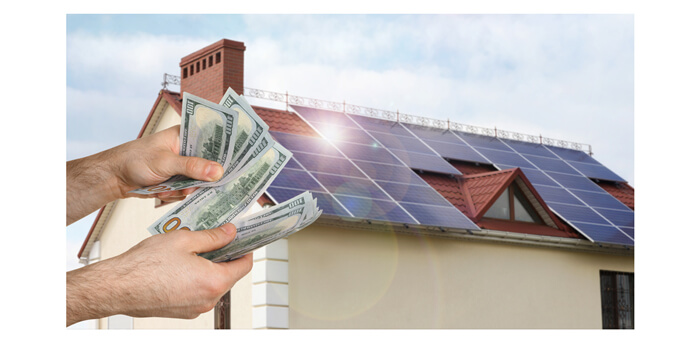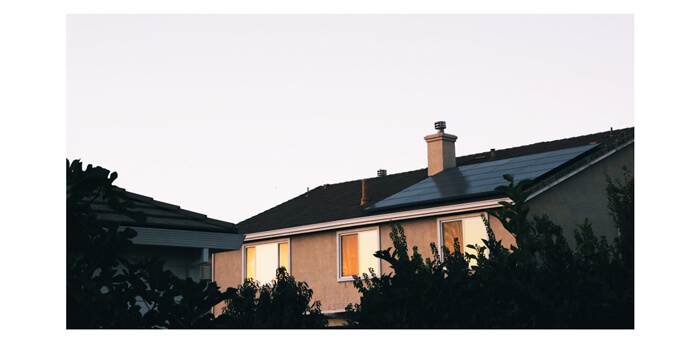Contents:
The cost of solar panels has dropped dramatically in the past decade, making solar energy more accessible and affordable for Americans across the country. However, the initial installation cost still poses a challenge for many households. Fortunately, several financing options now make it possible to switch to solar energy with no money upfront. This guide outlines how Americans can embrace solar power without an initial investment and enjoy long-term savings on energy costs.

Financing Options for Solar Power with No Money Upfront
Various financing plans allow you to install solar panels without an upfront cost. Below is a summary of the primary options:
|
Financing Option
|
Description
|
Benefits
|
Considerations
|
|
Solar Lease
|
Rent solar panels and pay a fixed monthly fee.
|
Little to no upfront cost; fixed monthly payment.
|
Panels remain the property of the leasing company.
|
|
Power Purchase Agreement (PPA)
|
Buy the power generated by solar panels installed on your roof.
|
Pay only for energy produced; minimal upfront costs.
|
Rate may increase over time.
|
|
Solar Loan
|
Take out a loan to purchase solar panels outright.
|
Own the system; eligible for tax incentives.
|
Interest payments over time.
|
|
PACE Financing
|
Pay for solar installations through property taxes.
|
Longer payment terms; tied to property, not individual.
|
Requires local government approval.
|
Solar Lease
A solar lease is one of the most popular ways to go solar without a significant upfront investment. When you lease a solar energy system, the provider owns the equipment, and you pay a fixed monthly fee. This option allows you to lock in a lower monthly cost than your current utility bills without worrying about maintenance or repair costs. However, it’s important to remember that you do not own the system, meaning you cannot claim tax credits.
Power Purchase Agreement (PPA)
A PPA is similar to leasing, but instead of paying a flat fee, you pay for the electricity generated by the solar panels at a rate lower than your standard utility cost. This option is excellent for households that want to start saving immediately and avoid paying for equipment and installation. While PPAs offer minimal risk, they may include a rate increase over time, so it’s essential to review terms carefully.
Solar Loans
If you want to own the system outright, a solar loan might be the best choice. With a solar loan, you finance the cost of your solar system, making it possible to go solar with no upfront payment. Loans are generally structured with fixed monthly payments, and owning the system allows you to benefit from any available tax credits and incentives. Loan terms and interest rates vary, so comparing options is essential.
Property Assessed Clean Energy (PACE) Financing
PACE financing is a program that enables homeowners to finance renewable energy improvements through property taxes. The financing amount is repaid over a set period as part of the property tax bill, which can help homeowners avoid the traditional credit approval process. PACE financing is only available in certain regions, and approval depends on local government programs.
Understanding the Financial Benefits of Going Solar
Switching to solar with no money upfront offers substantial financial benefits over time. For homeowners, solar systems can significantly reduce electricity bills by generating power directly from the sun. These savings grow as utility prices increase, meaning the value of solar energy can keep pace with inflation. For example, households in sunny regions may offset up to 100% of their energy needs, resulting in minimal or even zero electric bills.
Additionally, some financing programs, like solar loans, allow homeowners to qualify for federal tax incentives. The federal solar tax credit, known as the Investment Tax Credit (ITC), currently allows homeowners to deduct a portion of the cost of installing a solar energy system from their federal taxes. With a solar loan, homeowners can claim this credit, further enhancing the financial return on their solar investment.
Long-Term Environmental Impact
In addition to financial savings, going solar with no money down supports environmental sustainability. Solar energy systems produce clean, renewable power that reduces dependence on fossil fuels, thereby cutting greenhouse gas emissions. Over its lifetime, a single solar panel system can offset many tons of carbon dioxide, contributing to cleaner air and a healthier environment. Many American homeowners are motivated by this impact, as they seek to make personal contributions to environmental goals like reducing pollution and supporting energy independence.
Comparing Solar Financing Options to Meet Your Goals
Choosing the best no-upfront-cost solar option depends on your priorities. If you aim for immediate savings without committing to long-term ownership, a solar lease or PPA might be ideal. For homeowners interested in maximizing long-term returns and tax benefits, a solar loan or PACE financing could provide greater financial rewards. Here’s a comparison of scenarios:
|
Scenario
|
Preferred Financing Option
|
Benefits
|
|
Immediate Savings without Ownership
|
Solar Lease or PPA
|
Lower monthly utility costs, no maintenance fees.
|
|
Maximizing Tax Credits
|
Solar Loan
|
Ownership of system, eligible for federal tax incentives.
|
|
Long-Term, Low-Cost Financing
|
PACE Financing
|
Paid through property taxes, transferable upon home sale.
|
Exploring the Best Providers and Programs
To make an informed decision, it’s essential to research local solar providers and available financing programs. Some states offer additional rebates and incentives, and utility companies may also offer their own solar energy programs. Working with a reputable solar company can help you navigate the application process, understand local incentives, and choose the financing option best suited to your household’s needs.
As solar technology continues to evolve, the ability to install solar with no upfront cost empowers more Americans to harness the sun’s power, reduce their environmental impact, and cut energy expenses. Solar energy is a long-term investment that, when financed wisely, can yield both immediate and lasting benefits.
Factors to Consider When Going Solar with No Money Down
While going solar with no money upfront offers many advantages, several factors are worth considering to ensure the best outcome. First, evaluate your property’s solar potential. Homes with unobstructed roofs facing south or west typically benefit most from solar power. Shading, roof angle, and local climate can also impact the efficiency of your solar system, so conducting a solar assessment with a professional installer is essential.
It’s also vital to understand the terms of any financing agreement. Solar leases and PPAs often have contract terms ranging from 15 to 25 years, and while they offer stability in pricing, some contracts include annual escalators that increase payments over time. Reviewing these terms will help you avoid unexpected costs and understand your commitment to the provider.
The Role of State Policies and Incentives
State policies and incentives can significantly affect the feasibility and affordability of solar energy. For example, states with robust renewable energy mandates or incentives, like California, New Jersey, and Massachusetts, have programs that further reduce the cost of solar installation. Additionally, many states offer net metering, allowing homeowners to earn credits for excess energy generated by their solar systems. These credits can be applied to future utility bills, maximizing the system’s value and boosting long-term savings.
In some cases, state programs even provide performance-based incentives, which reward solar system owners based on the amount of energy generated. These state-level incentives, combined with the federal tax credit, make a no-upfront-cost solar installation even more attractive.

Home Resale Value and Solar
Solar panels not only reduce utility bills but can also enhance your home’s resale value. Studies show that homes equipped with solar energy systems often sell at higher prices and more quickly than comparable non-solar homes. For homeowners using solar loans, ownership of the system can be transferred to the new owner, making the property more appealing. Even if a lease or PPA is in place, solar panels can still add value by offering potential buyers the benefit of reduced utility costs from day one.
Debunking Myths About Solar with No Upfront Cost
Several myths persist about going solar with no money upfront, and it’s helpful to address these misconceptions. One common myth is that no-cost solar options result in lower-quality installations. In reality, reputable providers use high-quality equipment, and their financing options are structured to make solar accessible to more homeowners without sacrificing quality. Another misconception is that maintenance costs are high. With solar leases and PPAs, maintenance is often included, providing peace of mind and keeping your system performing optimally without additional expenses.
Some people also worry about the complexity of switching to solar or the potential difficulty in ending a contract. However, most providers offer straightforward terms and even options to transfer agreements if the homeowner decides to sell the property. By doing thorough research, you can avoid these pitfalls and enjoy a smooth transition to solar energy.
Taking the First Step Toward No-Cost Solar
Switching to solar with no money down is an accessible and impactful way to adopt renewable energy. The journey begins with evaluating your energy needs, exploring financing options, and connecting with a trusted solar provider who can guide you through the process. As more Americans make the shift to solar power, the nation collectively moves closer to a sustainable and resilient energy future. Whether your goal is immediate savings, environmental impact, or property value growth, going solar without upfront costs is a powerful choice with benefits that extend for decades.
FAQs About Going Solar with No Money Upfront







